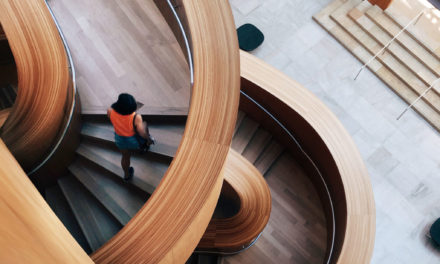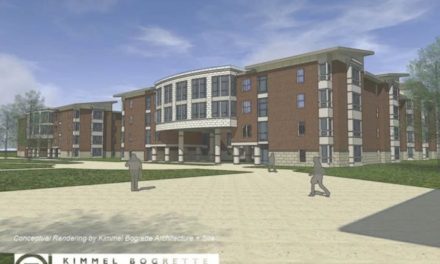Following a tumultuous 2020, all industries are seeking insight and assurances as 2021 gets into full swing. To keep interior design practitioners and professionals on the cusp of these relevant changes as related to global trends, economic indicators, and beyond, the American Society of Interior Designers (ASID) has released its annual Outlook and State of Interior Design Report.
Compiled by the Society’s dedicated research division, the compendium reviews the state of the interior design industry, business and profession to offer a comprehensive outlook for the year ahead to guide practitioners. The report studies topics such as the U.S. economy and U.S. construction activity, among other economic, business, and design trends and future insights. As the world slowly begins to adapt to and emerge from the pandemic, the ASID 2021 Outlook and State of Interior Design Report gives designers the tools they need to lead the way.
“ASID is proud to give designers this critical information to support them in the year ahead,” notes ASID CEO, Gary Wheeler, FASID. “Industry practitioners have the opportunity to play a pivotal role in health and safety as we move forward, and it is our responsibility as the only design association for all sectors to keep the industry educated and engaged. We hope that members and non-members alike will find value in this report and use it to elevate their practice and improve the lives of others and the world around them.”
The report finds that health and wellness, long pillars of the ASID mission, have become top priorities for individuals and institutions. Additional findings that designers must bear in mind include:
Population age distribution is no longer a pyramid, but a rectangle. Increases in the aging population and decreases in birth rate over time have transformed the population distribution, and each generation has different lifestyles and needs.
Economic and social inequalities will worsen due to the pandemic, but there is heightened awareness and efforts to improve diversity, equity, and inclusion overall. Increased attention is being given to providing good design to everyone, creating a greater stock of affordable housing, adding diversity in leadership positions, and thinking about identity holistically.
The great pause of 2020 had people and organizations revisit fundamental values and lead meaningful transformations. The pursuit of wealth, security and health will drive life goals, but at different capacities and prioritizations.
Sustainability becomes a bottom-line concern. Companies will need to rethink their operations and their environmental impact as they face the potential economic costs of climate change. Organizations will want their business environments to reflect these values and want more information about sourcing, supply chain, methods of delivery and life cycle.
Virtual technologies will become more mainstream as a way of doing business, including how designers work. Both clients and employees will utilize visualization technologies to replicate the human interaction/experience in an actual physical environment and provide necessary services as best as possible.
The report also positions the interior design industry within the U.S. economy. While the recovery in 2021-22 may be slow, the overall outlook is positive, and growth of spending in the residential sector has made up for losses in the commercial space. It finds:
Real spending on furnishings and durable household equipment and the housing market have led the recovery. The pandemic escalated the need for improved living accommodations that resulted in the purchase of a home and/or renovation projects.
Pricing concerns will persist, impacting the bottom-line. Trade issues and inflation influence product and material pricing. Suppliers and now contractors have absorbed cost increases that resulted from the disruptions to supply chains and shifts in supply and demand from COVID-19. Continued unresolved trade concerns with various large regional powers, like Canada, Mexico, China, and the European Union (EU) play a pivotal role, as well.
Construction spending activity in commercial sectors will continue to suffer. Office, hospitality, and retail sectors that have been hit the hardest from the pandemic will experience stagnant recovery. Work in these sectors will focus on required updates in response to the pandemic.
The report also looks at the current state of the industry and profession, noting that interior design is on a strong path to recovery, thanks to the consistent firm and practitioner growth for more than the past five years. However, it faces challenges from talent shortage and diversity, and suggests that the profession must work together collectively to support emerging talent.
As we look ahead, industry experts shared future insights on how the pandemic has illuminated the need for trust in data, people and physical spaces. Interior designers have been called to serve as essential advisors, not only to respond to COVID-19, but more so to lead and activate health, safety, and welfare for all. Concludes Susan Chung, Ph.D., ASID Vice President, Research and Knowledge, “We hope this time does not pass in vain. As we move forward, we challenge ourselves to design with purpose, take action for positive change, embody the role of trusted advocates for people in the built environment – and inspire others to participate in the movement to actualize excellence.”
The report is now available for download to ASID members free of charge, and for $249.95 for non-members. Media may access a full copy of the report by emailing lucy@novitapr.com.
About ASID
The American Society of Interior Designers believes that design transforms lives. ASID serves the full range of the interior design profession and practice through the Society’s programs, networks, and advocacy. We thrive on the strength of cross-functional and interdisciplinary relationships among designers of all specialties, including workplace, healthcare, retail and hospitality, education, institutional, and residential. We lead interior designers in shared conversations around topics that matter: from evidence-based and human-centric design to social responsibility, well-being, and sustainability. We showcase the impact of design on the human experience and the value interior designers provide.
ASID was founded over 40 years ago when two organizations became one, but its legacy dates back to the early 1930s. As we celebrate nearly 85 years of industry leadership, we are leading the future of interior design, continuing to integrate the advantages of local connections with national reach, of small firms with big, and of the places we live with the places we work, play, and heal. Learn more at asid.org.




